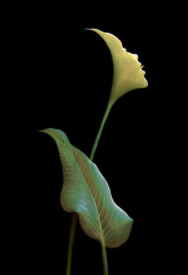Key points
- Heterosexual inmates may engage in same-sex behavior, which can impact their overall sexual orientation.
- Arranged-marriage couples do just as well when it comes to companionship, satisfaction, commitment, and passion; and they divorce far less.
- We may become one another’s cage—the very way we express our pain can turn into our partner’s prison.
Romance encompasses passion and compassion. Can we actively choose to feel them? Can we, do we, in real life, choose to take a passion potion? If, as Sartre once claimed, the French were never freer than under the German occupation, maybe we can locate love’s freedom behind bars. Heterosexual inmates may engage in same-sex behavior. They choose to go against their bodily instincts and use imagination to channel their desire towards what has been called “situational homosexuality.” More importantly, a recent study found that this behavior, however situational, profoundly impacted their overall sexual orientation; they may have effectively chosen to become homosexual.

From sexual orientation to individual attraction, we may step outside the liberal hemisphere to visit arranged marriages—over half of all marriages worldwide. These couples presumably start with far less passion than those who follow their hormonal hearts. Do they give passion up, unwittingly grow to gain it, or can they choose to enact it? Likely an amalgam of the three, but either way, according to surveys, these chained couples tend to do just as well when it comes to companionship, satisfaction, commitment, and yes, passion too; they certainly divorce far less. Granted, we may scorn such “prison passion,” but is “pheromone passion” truly any better? Does it really matter, for freedom, if you are in a cage, or if your body is one?
Peter Gabriel almost begs his mind to unlock his bodily cage that “keeps me from dancing with the one I love,” pleading “set my spirit free, set my body free.” And yet, sometimes, we might do well practicing interoception, heeding our body’s silent advice; our body might sense what our mind refuses to accept: that it’s time to let go, to move on to other dancers, and dances, or perhaps to just stop dancing, at least for a while.
After all, when it comes to love, it is not merely society or your hormones that may be locking you up. Worse: It could be your lover or beloved. Caught in a vicious cycle, we may become one another’s cage, guards instead of guardians; the very way we express our pain can turn into our partner’s prison.
Is there a way out of this prison? Evidently so. However hard, some of us do manage to make a golden age from our cage. True love can last long, spanning decades. Among such durable couples, about a fifth defy biologism: they keep the intensity and sexual chemistry of passionate love and eventually even get rid of the uncertainty and anxiety that accompanies their early love. Studies suggest these couples keep the triad of passion, intimacy, and commitment by mindful forgiveness and getting together through a crisis. For them, wanting and liking can, and do, go together.
In her 1929 dissertation on Love and Saint Augustine, Hannah Arendt argued that if man “could be said to have an essential nature at all, it would be a lack of self-sufficiency. Hence, he is driven to break out of his isolation by means of love… For happiness, which is the reversal of isolation, more is required than mere belonging. Happiness is achieved only when the beloved becomes a permanently inherent element of one’s own being.”
If love is a human hourglass, then the lovers’ hands can flip it; they can rock the grains of sand, if they co-choose, extending their together-time again and again and again, to the meeting place of choice, care, and craving. I fear that the worst cage is our illusion of independence; and feel that the best way out is always through true love: when your beloved’s fears and wishes become your own, to face and realize together, when you can sense your beloved behind your eyes, getting into your bloodstream.
While I personally prefer the yin-yang way to depict this union, a simpler, and scientifically prevalent method to envision it is the Inclusion of Other in the Self (IOS) Scale, depicting the degree to which we incorporate our partner into our notion of our self. Which circles best portray you and your partner? Which picture would you like your relationship to be like? Equally important, which picture(s) do you think your partner will choose?
Time may destroy all things—but the truth. And we, if free, can take time into our own hands, and flip the hourglass—or smash it.





